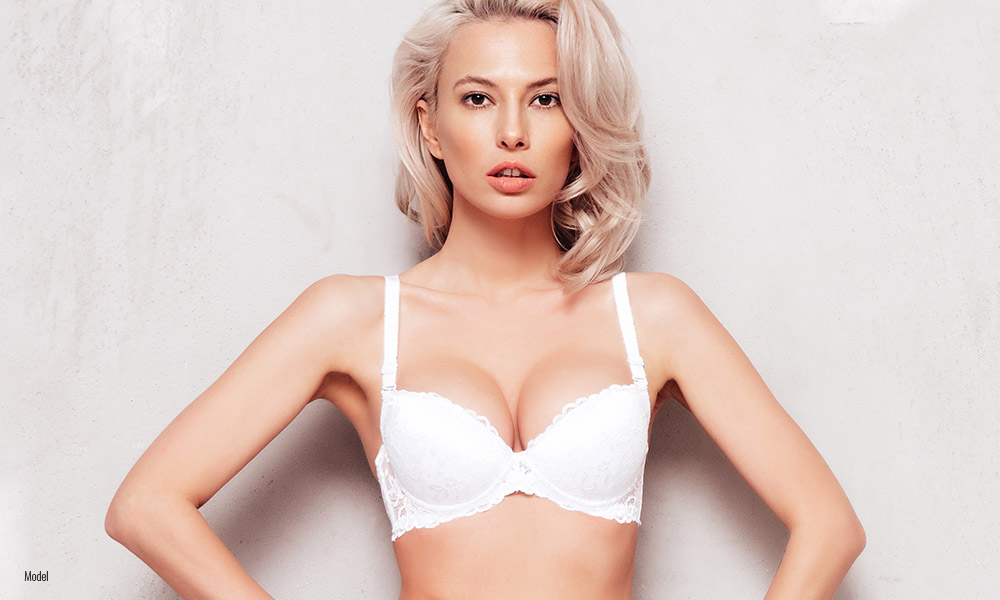Fat Transfer Breast Augmentation vs Implants

Implants aren’t the only option when it comes to increasing breast size. When considering breast augmentation, fat transfer may also be a solution. Both approaches enhance the size and shape of the breasts, but they differ significantly in how the procedures work, the recovery process, and the long-term outcomes. This guide explores the differences between fat transfer breast augmentation and implants, helping you make an informed decision about which option would suit you best.
4 Min Read:
What Is Fat Transfer Breast Augmentation?
Fat transfer breast augmentation, also known as autologous fat grafting or natural breast augmentation, is a procedure that uses your body’s excess fat to augment the size and shape of your breasts. This option is best for individuals seeking a natural, subtle enhancement without the use of synthetic implants.
How it works:
- Liposuction: Fat is harvested from areas of the body where it is in excess, such as the abdomen, thighs, or flanks.
- Purification: The harvested fat is purified to ensure only healthy fat cells are grafted.
- Injection: This purified fat is carefully injected into the breasts to achieve the desired size and contours.
This dual-purpose procedure enhances the breasts and sculpts the donor area, providing additional body contouring benefits.
Ideal Candidates for Fat Transfer
Natural breast augmentation is most suitable for:
- Individuals seeking a modest increase in size (1–1.5 cup sizes).
- Patients with adequate extra fat for harvesting.
- Those who prefer a natural look and feel.
- Women who want to avoid synthetic implants.
Breast Implants
Breast implants are the traditional and most common method for breast augmentation. Implants are medical-grade devices filled with either saline (salt water solution) or silicone gel, placed surgically to enhance the size and shape of the breasts.
How it works:
- Incision Placement: The surgeon makes an incision, commonly in the breast crease, around the areola, or in the armpit.
- Pocket Creation: A pocket is created either beneath the breast tissue (subglandular placement) or under the chest muscle (submuscular placement).
- Implant Insertion: The implant is inserted and positioned to achieve the desired shape and size.
- Closure: The incision is carefully closed with fine sutures, and the breasts are dressed for recovery.
Breast implants provide more dramatic volume enhancement than fat transfer and are available in a range of profiles, shapes, and sizes, allowing for fully customizable results. Read more about your breast augmentation options here.
Types of Implants
- Saline Implants: Silicone shells are inserted empty and filled with sterile saltwater after being placed.
- Silicone Implants: Silicone gel-filled silicone shells replicate the natural look and feel of breast tissue.
- Gummy Bear Implants: A cohesive silicone gel implant that maintains its shape and offers a natural appearance.
Ideal Candidates for Breast Implants
Breast implants may be a better enhancement option for:
- Patients seeking a significant increase in breast size.
- Those with minimal body fat for a fat transfer procedure.
- Women who want predictable, long-lasting results.
Fat Transfer vs. Breast Implants
Appearance
- Fat Transfer: Produces natural, subtle results, which is ideal for those looking for moderate enhancement.
- Breast Implants: Provides more noticeable, dramatic results with a variety of size and shape options.
Longevity of Results
- Fat Transfer: Results are permanent, but some fat may be reabsorbed by the body, typically within the first few months.
- Breast Implants: Implants last 10–20 years on average but may require replacement or removal over time.
Risks
- Fat Transfer: Risks include fat reabsorption, asymmetry, or cyst formation.
- Breast Implants: Risks include implant rupture, capsular contracture, and the need for revision surgery.
Recovery
- Fat Transfer: Recovery includes healing from both liposuction and fat grafting, which may involve swelling and bruising in multiple areas.
- Breast Implants: Recovery focuses on the chest area, with side effects such as swelling, bruising, and temporary tightness.
Can Fat Transfer Replace Breast Augmentation?
Fat transfer can replace breast implants for some individuals, but it’s not a direct substitute in every case. Fat transfer is well-suited for patients who desire a modest, natural enhancement and have enough donor fat to achieve their desired results.
However, for those seeking significant volume, projection, or highly customizable results, breast implants remain the better option. Implants also provide more control over the shape and size of the breasts, which may be difficult to achieve with fat transfer alone. Your plastic surgeon will discuss the best option for you and your aesthetic needs during your initial consultation.
Natural Breast Augmentation in Long Island, NY, or Boca Raton, FL
Dr. David Pincus offers traditional and fat grafting breast augmentation in Smithtown, New York. Our skilled, board-certified plastic surgeon can help you determine which procedure will meet your unique goals. He also offers Crisalix Virtual Aesthetics 3D imaging to preview your potential breast augmentation results before the surgery. Call (631) 352-3556 or fill out our contact form to schedule your breast augmentation consultation with Dr. Pincus today.
